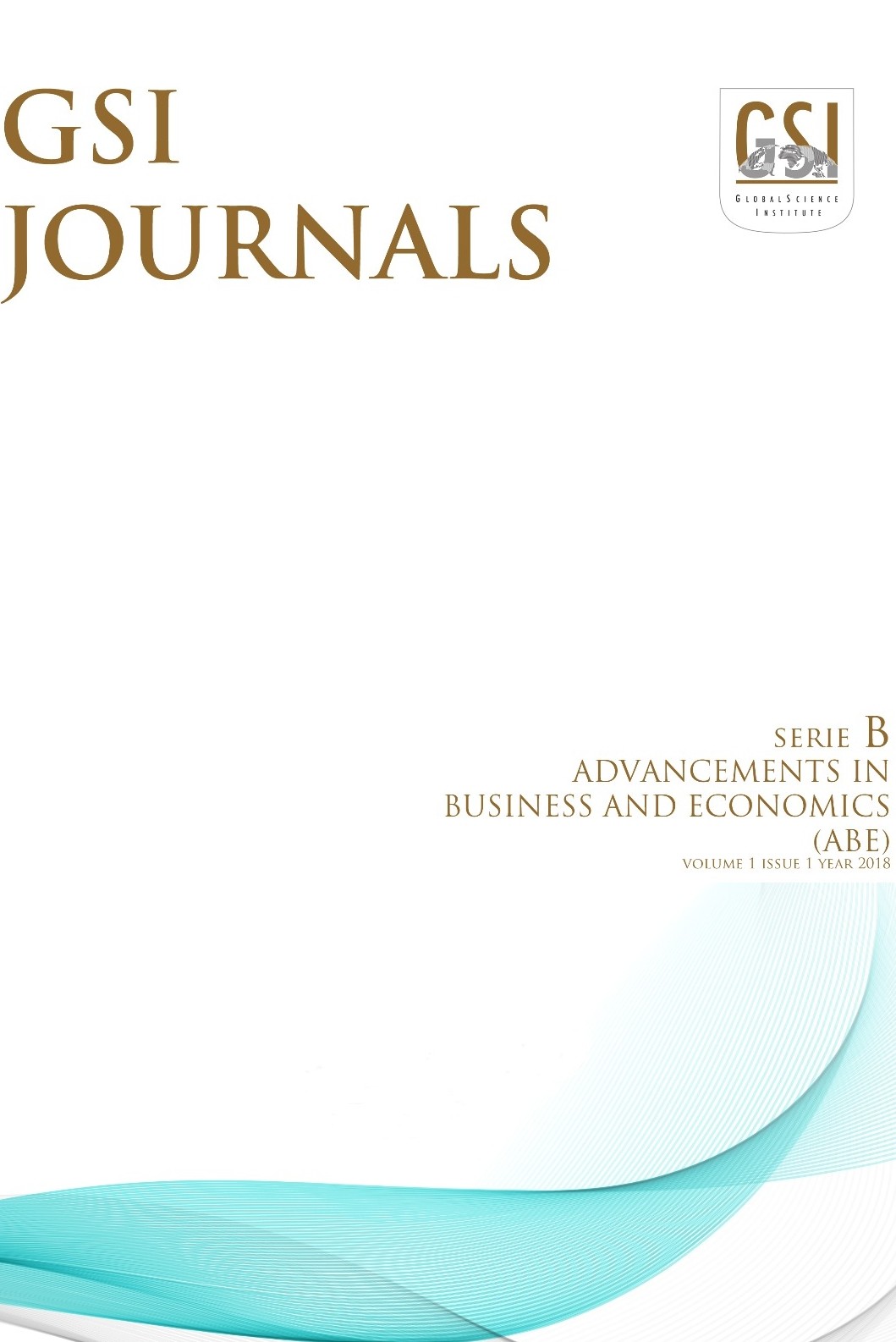The Impact of Oil Price and Exchange Rate on Agricultural Commodity Prices:Evidence from Turkey
The Impact of Oil Price and Exchange Rate on Agricultural Commodity Prices:Evidence from Turkey
These days, the increasing of the food price is global issue which led to global food crisis, moreover Turkey affected by rising world food prices and internal dynamic. In this paper the researchers examine the long-term relationship between Oil Price and Exchange Rate on Agricultural Commodity Prices (Wheat, Barley, Oat, rye and Corn). Evidence from Turkey. This examination is based upon the data set covering the yearly period of 1969 to 2019. By using time series analysis the empirical results show that Oil Price and Exchange Rate affected Agricultural Commodity Prices positively. Keywords: Oil Price, Exchange Rate, Agricultural Commodity Price. JEL Codes: Q41, F31, Q14.
Keywords:
Oil Price, Exchange Rate Agricultural Commodity Prices,
___
- Abdlaziz, R. A., Rahim, K. A., & Adamu, P. (2016). Oil and food prices co-integration nexus for Indonesia: A non-linear autoregressive distributed lag analysis. International Journal of Energy Economics and Policy, 6(1), 82-87. Aye, G. C. (2016). Causality between Oil Price and South Africa's Food Price: Time Varying Approach-Relazione di causalità tra prezzo del petrolio e pr ezzo dei prodotti alimentari in Sud Africa: un approccio time varying. Economia Internazionale/International Economics, 69(3), 193-212. Baffes, J., & Dennis, A. (2013). Long-Term Drivers of Food Prices, the World Bank, Development Prospects Group & Poverty Reduction and Economic Management Network, Trade Department. Policy Research Working Paper, 6455. Bakhat, M., & Würzburg, K. (2013). Price relationships of crude oil and food commodities. Economics for Energy Working paper WP FA06. Burakov, D. (2016). Oil prices, exchange rate and prices for agricultural commodities: Empirical evidence from Russia. AGRIS on-line Papers in Economics and Informatics, 8(665-2016-45118), 33-47. Chen, S. T., Kuo, H. I., & Chen, C. C. (2010). Modeling the relationship between the oil price and global food prices. Applied Energy, 87(8), 2517-2525. Enders, W. (2004). Applied econometric time series 2nd edition. New York: John Willey & Sons. Engle, R. F., & Granger, C. W. (1987). Co-integration and error correction: representation, estimation, and testing. Econometrica: journal of the Econometric Society, 251-276. Esmaeili, A., & Shokoohi, Z. (2011). Assessing the effect of oil price on world food prices: Application of principal component analysis. Energy Policy, 39(2), 1022-1025. Fowowe, B. (2016). Do oil prices drive agricultural commodity prices? Evidence from South Africa. Energy, 104, 149-157. Gilbert, C. L., & Mugera, H. K. (2014). Food commodity prices volatility: The role of biofuels. Natural Resources, 5(05), 200. Harri, A., Nalley, L., & Hudson, D. (2009). The relationship between oil, exchange rates, and commodity prices. Journal of agricultural and applied economics, 41(2), 501-510. Hyder, Z., & Shah, S. (2005). Exchange rate pass-through to domestic prices in Pakistan (No. 0510020). University Library of Munich, Germany. Ibrahim, M. H. (2015). Oil and food prices in Malaysia: a nonlinear ARDL analysis. Agricultural and Food Economics, 3(1), 2. Jati, K. (2013). Sugar price analysis in Indonesia. International Journal of Social Science and Humanity, 3(4), 369. Jati, K. (2013b). Sugar commodity price analysis: Examining sugar producer countries. International Journal of Trade, Economics and Finance, 4(5), 288. Johansen, S., & Juselius, K. (1990). Maximum likelihood estimation and inference on cointegration—with applications to the demand for money. Oxford Bulletin of Economics and statistics, 52(2), 169-210. McGuire, S. (2015). FAO, IFAD, and WFP. The state of food insecurity in the world 2015: meeting the 2015 international hunger targets: taking stock of uneven progress. Rome: FAO, 2015. Nazlioglu, S., & Soytas, U. (2011). World oil prices and agricultural commodity prices: Evidence from an emerging market. Energy Economics, 33(3), 488-496. Nazlioglu, S., & Soytas, U. (2012). Oil price, agricultural commodity prices, and the dollar: A panel cointegration and causality analysis. Energy Economics, 34(4), 1098-1104. Nurhemi, S. R., Soekro, G. S. R., & Suryani, R. (2014). Pemetaan Ketahanan Pangan di Indonesia: Pendekatan TFP dan Indeks Ketahanan Pangan. Bank Indones. WP/4, 1-70. Pratomo, S. (2016). Investigating The Relationship between The Prices Of World Crude Oil And Domestic Food Commodities: Evidence from Indonesia. Thesis. Postgraduate School Bogor Agricultural University Bogor. Rezitis, A. (2015a). Empirical analysis of agricultural commodity prices, crude oil prices and US dollar exchange rates using panel data econometric methods. International Journal of Energy Economics and Policy, 5(3), 851-868. Saghaian, S. H. (2010).The impact of the oil sector on commodity prices: Correlation or causation?. Journal of Agricultural and Applied Economics, 42(3), 477-485. Nugroho, M. N. (2010). Pengaruh Dinamika Penawaran Dan Permintaan Valas Terhadap Nilai Tukar Rupiah Dan Kinerja Perekonomian Indonesia. BULETIN EKONOMI MONETER DAN PERBANKAN, 311. Sujai, M. (2011). Dampak Kebijakan Fiskal dalam Upaya Stabilisasi Harga Komoditas Pertanian. Analisis Kebijakan Pertanian, 9 (4), 297-312. Zhang, Z., Lohr, L., Escalante, C., & Wetzstein, M. (2010). Food versus fuel: What do prices tell us?. Energy policy, 38(1), 445-451.
- Yayın Aralığı: Yılda 2 Sayı
- Başlangıç: 2018
- Yayıncı: Halil Cem SAYIN
Sayıdaki Diğer Makaleler
GASTRONOMİ AKIMLARINDA SAĞLIKLI MOR YİYECEKLER
The Impact of Oil Price and Exchange Rate on Agricultural Commodity Prices:Evidence from Turkey
A NEW BUSINESS MARKETING TOOL: CHATBOT
MARKA ŞEHİR ALGISI VE REKREASYON İLİŞKİSİ: ESKİŞEHİR İLİ ÖRNEĞİ
Hakan ÖNCÜ, Hakan KATIRCI, Arif YÜCE
REKREASYON TANIMININ GOOGLE ARAMA MOTORU SONUÇLARINA GÖRE DEĞERLENDİRİLMESİ
Anıl Onur MERCANOĞLU, Kerem Yıldırım ŞİMŞEK
Kültürel Miras Yönetiminde Coğrafi Bilgi Sistemleri (CBS) Desteği: Odunpazarı Örneği
